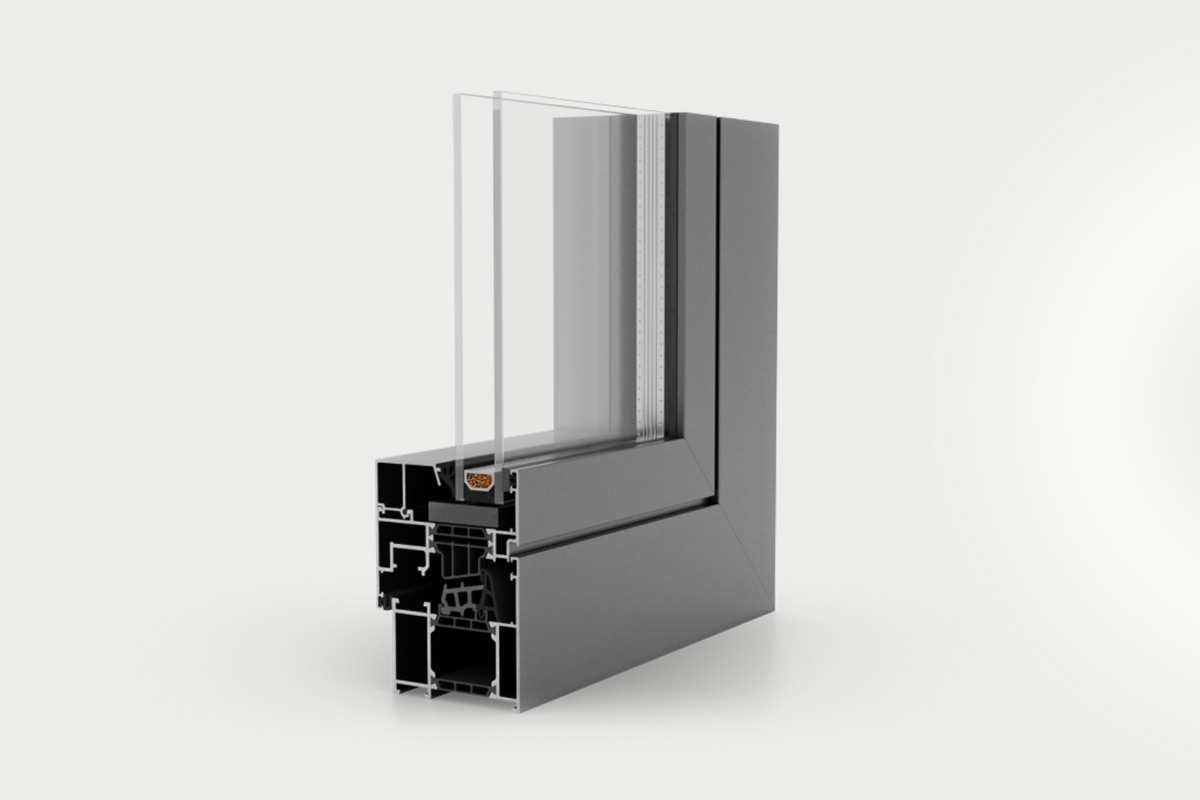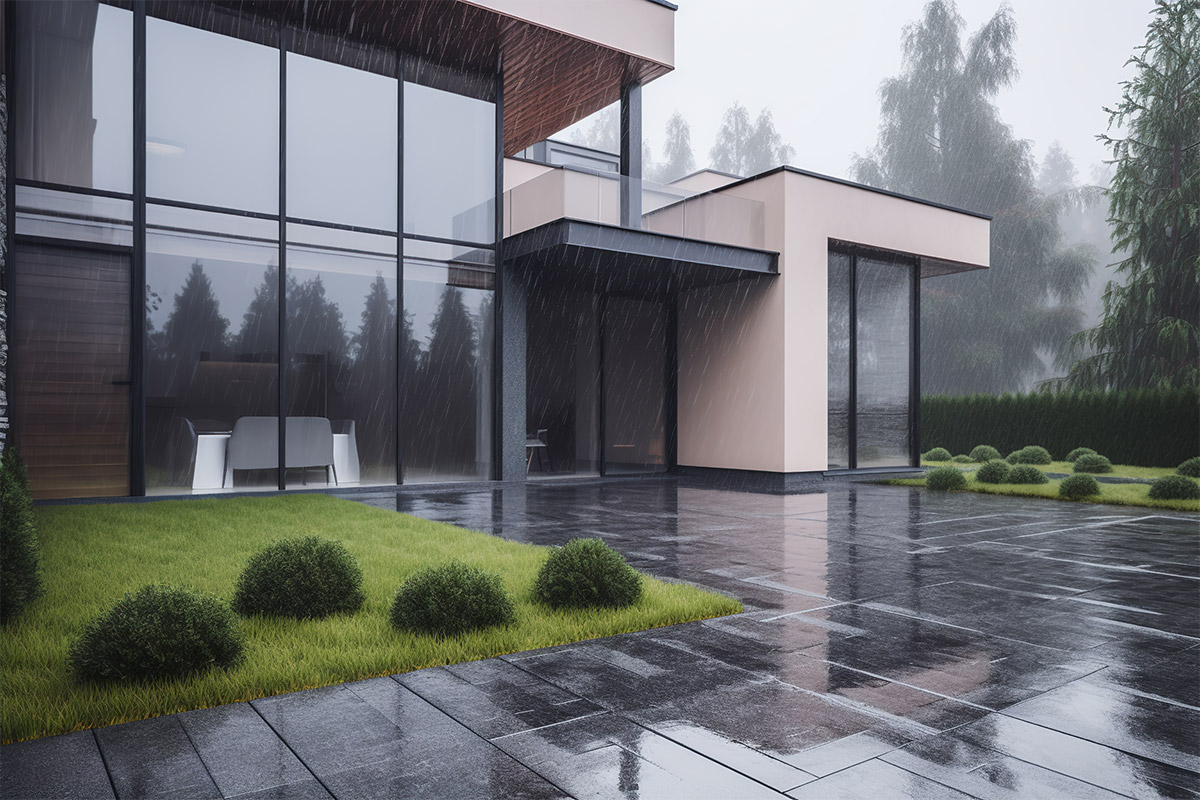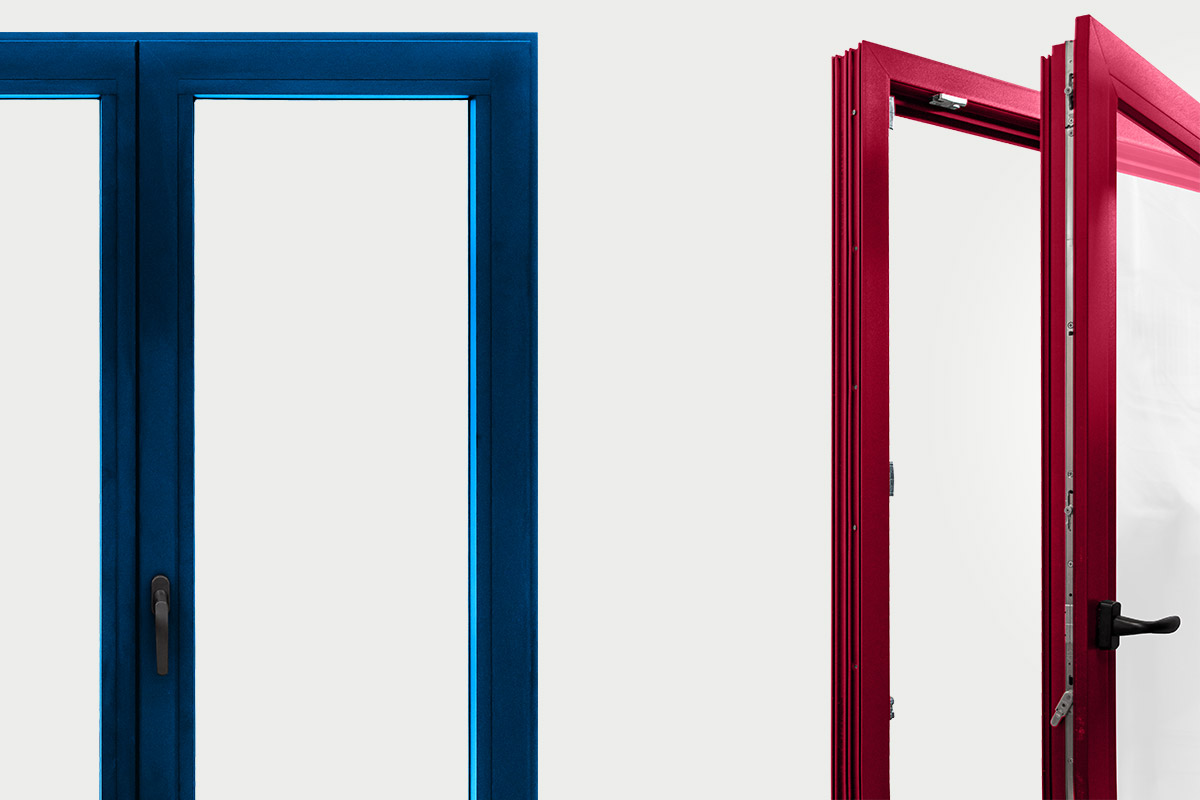12 September, 2023
windows

Every year, more and more people are opting for the installation of aluminium windows. However, compared to the dominant uPVC options, they still constitute only a modest portion of the market. Are aluminium systems even worth considering? Of course, they are. After all, they make up 10% of all window purchases. What are the pros and cons of aluminium? Who should choose them? Let’s find out.
Let's start at the beginning. Aluminium windows bask in the aura of modernity. Similarly to all other windows, they compose of three essential elements:

There are no significant differences in glazing and fittings between window types. Wooden, uPVC, aluminium, and the rarest steel windows frequently use identical fittings and panes. The differences mainly come from the used profiles.
Profiles are the foundational construction elements of windows that support fittings and glass but also determine their crucial parameters: beginning with their appearance and what they feel like, to acoustic and thermal insulating performance.
We can divide windows regarding many of their features. There's a reason, though, why their profile material is the most common choice for the distinguishing feature.
Many distributors assume that uPVC windows are the ideal solution for all their clients. On the one hand, this fact can be a disadvantage of aluminium windows. On the other hand, the role of a trailblazer can be very profitable.
Keeping our feet on the ground, we have to face four challenges:
How severe are these difficulties? They certainly are manageable—all the more since advantages effectively offset any potential issues.

Aluminium profiles are more expensive to produce, which translates directly to the higher cost of the entire investment. Compared to wooden joinery, we can expect an increase in price of about 30%. When we want to achieve the performance of uPVC products, we need to reach 50% deeper into our pockets. We can, of course, find cheap aluminium and expensive plastic windows, but their performance will be incomparable.
A transformative change to our const-efficiency calculation happens when we account for the whole time we will use our new windows. Aluminium is much more durable than other materials, highly resistant to mechanical damage and unaffected by biological corrosion.
Corialis, one of the biggest aluminium joinery manufacturers, estimates the lifespan of this type of window to be up to 60 years. Calculating the expense per year, it turns out to be surprisingly cheap.

It is untrue that choosing aluminium, we opt for cold windows. The majority of Eko-Okna profiles employ thermal breaks. Many qualify for the Clean Air initiative. Its goal is to replace joinery with more energy-efficient systems, such as MB-86N.
There are many factors impacting the thermal and acoustic performance of windows. The material used to create the profile is a crucial one. While aluminium is a good conductor, the chamber structure, filling with insulating materials, and using the right glazing can help counteract that issue.
Compound glass panels, at least double-glazed, drastically improve the thermal efficiency of the entire unit. Particularly as aluminium windows have a far more favourable ratio of glazing size to profile than other systems. The same goes for acoustic insulation.
Glazing units with at least two panes drastically improve the thermal efficiency of the entire window, particularly as aluminium windows have a far more favourable ratio of glazing size to profile than other systems. The same is true for acoustic insulation.
Unfortunately, aluminium is much more expensive when trying to get performance parameters similar to the more cost-effective uPVC. However, windows of this type have some unique advantages, and if we are determined to take advantage of them, we can reach satisfactory levels of heat transfer and sound insulation coefficients.
Due to the properties of metals, even energy-efficient aluminium windows are cold to the touch. Their specific heat, i.e. the energy required to heat a substance by 1 degree, is low. Unlike plastic and wood, whose specific heat is much higher, they can be unpleasant against bare skin.
However, we must ask ourselves how often we touch window profiles. The experience of direct contact is a noteworthy issue when it comes to flooring, but not for windows.
It is virtually impossible to repair aluminium profiles. Unlike uPVC, if the window suffers considerable damage, it cannot be mended by applicating any natural or synthetic substance. In the case of wooden windows, sometimes only sanding and painting may suffice. It is never that easy with aluminium.
On the other hand, this material is difficult to dent, puncture, or scratch, so the typical client would rarely have to worry about its repair. Improper use of the window can damage the fittings, and carelessness sometimes results in broken glass. Such accidents equally affect all windows, regardless of their profile material.
The many advantages of aluminium windows have already become apparent when we analysed their disadvantages, which, as it turns out, are not as dire as they are painted. These advantages are:
In addition to the above, we can name several further significant factors:
We need a closer look at these features to choose the right windows.

Aluminium windows facilitate the construction of spanning glazings thanks to the lightness and strength of their profiles, which are resistant to deformation. They allow the creation of windows of larger dimensions, with profiles narrower than uPVC or wooden systems.
With aluminium, it is possible to achieve a glazing area that surpasses 90% of the opening size, even in sliding systems, which grants us maximum access to natural light and a trendy minimalist design.
The characteristics described in the paragraph above allow us to create exciting windows in unusual shapes. Triangles, trapezoids, or circles aren't the domain of aluminium only because, as experts point out, plastic got its name because of its unparalleled plasticity. There's also wood, ubiquitous in the industry precisely because of its ease of processing.
Even though aluminium has its limitations, it is not uncommon for a customer initially choosing wooden or uPVC windows to be directed to an aluminium window manufacturer as the windows they had planned were not achievable with other materials. Such situations occur particularly often for larger structures that benefit from aluminium's strength.

Aluminium profiles are already pleasing to the eye in their natural form. Nevertheless, we can complement them with aesthetic finishes. Most often, this means one of two basic options, which are:
Paints offer great possibilities. Utilising modern technology, we can pick exactly the colour we like using the RAL colour palette, which contains hundreds of hues. Most importantly, we are never surprised by the final look, as the shade on the installed window is the same as on the sample we used while choosing. There is no risk of deviation from standards.
Veneers, the 2nd option, offer a completely different, striking appearance and even textures. The most popular are 'woodec' veneers, which make profiles look like wood.

The maintenance of aluminium windows is limited to taking care of their seals and fittings, meaning we have to do with them what we do with all other windows anyway. Other than that, there are no specific burdens.
The surface of aluminium windows does not require special care like, e.g. wood does. Regular cleaning is also undemanding, as wiping them with a damp cloth and mild detergent suffices.
Even with the new knowledge from this text, we may find it hard to make our minds up regarding the type of windows to choose. Nevertheless, energy-efficient, quiet, and durable aluminium windows are, without a shred of doubt, a good choice for any home. No one will regret purchasing them.
When aiming for the best thermal performance, the uPVC Energeto Neo system appears optimal. Its heat transfer coefficient reaches extremely low values without overly inflating the price. uPVC is always the way to go when our priority is the optimum price-to-performance ratio. In such cases, it is worth paying attention to the greenEvolution solution.
Those sensitive to ecological issues and wanting to minimise their carbon footprint should choose Naturo wooden windows. All the more so, these systems are manufactured from FSC-certified wood, ensuring that the wood was harvested without causing undue environmental damage. Wood also provides the unique pleasure of experiencing a natural material, which is often a factor that outweighs all others
Those relying on aluminium windows usually emphasise their good heat transfer coefficient, sufficient sound insulation, and high durability. The decisive argument tends to revolve around their aesthetics. Flush aluminium windows can be striking, especially in modern buildings, and their ability to invite plenty of natural light into the interior cannot be overlooked either. We also need to keep in mind that whichever aluminium system we choose, we can be sure the windows will not lose their appearance and technical performance anytime soon.

Hotline:
+1 917 810 8657 +48 572 337 243 Connection fee in accordance with the operator`s price list.
Eko-Okna S.A.
Kornice, ul. Spacerowa 4
47-480 Pietrowice Wielkie
NIP: 6391813241, KRS: 0000586067